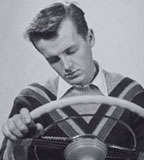
This discovery could help to identify some of the biological mechanisms behind sleep, and could one day represent a novel way to develop on-the-spot tiredness tests for drivers, pilots and doctors who usually tend to work for long and irregular hours.
Over the years it has been challenging to find proof of accessible markers of sleepiness. The most common and visible signs include fluttering eyelids. But ‘sleepy behavior’ of people varies from person to person.
Paul Shaw of Washington University School of Medicine in Missouri has come up with a definitive marker for sleepiness. He and his colleagues studied flies who had been subjected to sleep deprivation. They found that levels of an enzyme called amylase, which is responsible for breaking down starch, gets higher and higher the longer the flies are awake.
When they tested humans who were sleep-deprived, levels of amylase in saliva were also higher. Still, it is not clear why amylase, which isn’t known to have any sleep-related functions. Although, it is known that this enzyme is related to stress.
The amount of variation in amylase from person to person means that a single measurement cannot tell whether a person is tired or not.
However, Shaw says that relative levels of amylase against other compounds in saliva along with other biomarkers might just reveal something more. “We think that ultimately we’re going to need a panel of biomarkers,†he added, saying that more markers would allow for more reliability and sensitivity.
So will sleepiness soon be subjected to testing? Jim Horne, director of Sleep Research Centre at Loughborough University, UK, said “It would be marvelous if we could have an instantaneous test.â€
Shaw also hopes that he may come across other markers of sleepiness that have a more direct role in sleep. This could help to throw light on the biology of snoozing and could possibly help insomniacs achieve better sleep.
